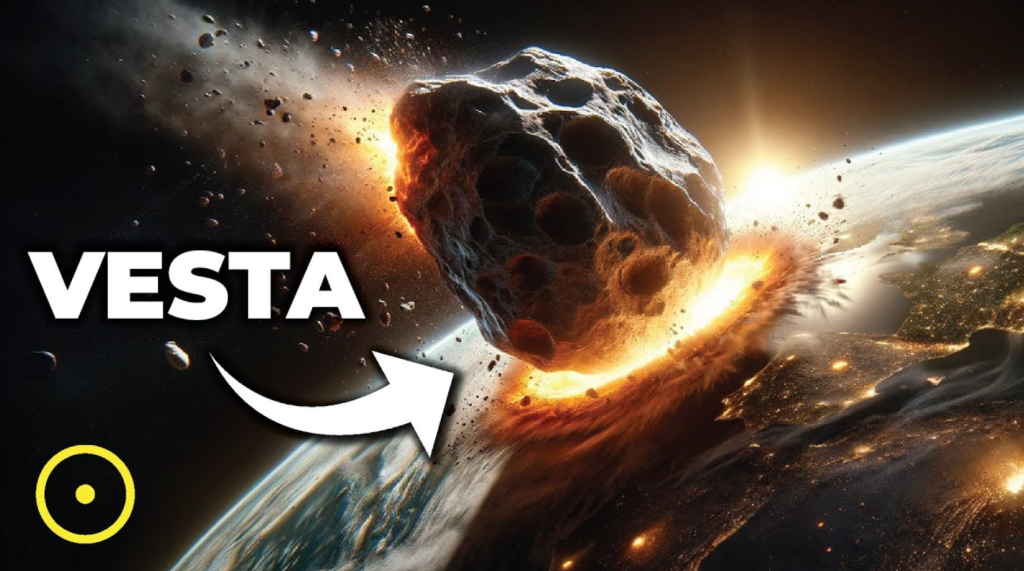Vesta, the largest asteroid in our solar system, measures a staggering 525 km in diameter. Discovered in 1807, Vesta is not just an ordinary rock—it’s a massive object in the asteroid belt, far larger than most asteroids. For comparison, the asteroid that wiped out the dinosaurs was only 10 km wide. Vesta is so bright that it’s even visible from Earth without a telescope. But what if this massive asteroid collided with Earth?
If Vesta were to hit Earth, the consequences would be catastrophic. Traveling at speeds of up to 20 km/second, its sheer mass and velocity would release an unimaginable amount of energy. The collision would be much more powerful than any atomic bomb, releasing energy equivalent to billions of Hiroshima-sized bombs. The impact would create a massive crater hundreds of kilometers wide, possibly even deep enough to penetrate Earth’s crust, triggering widespread earthquakes, tsunamis, and landslides.

The force of impact would cause immense destruction to the Earth’s surface. Along with the physical damage, the thermal pulse from the collision would ignite vast firestorms, and the debris sent into the atmosphere would block sunlight, triggering a global temperature drop. This “impact winter” would disrupt photosynthesis and cause widespread famine, eventually leading to a mass extinction event. Humanity would likely be wiped out, along with many other species dependent on stable environments.
However, life on Earth is incredibly resilient. Certain organisms, such as extremophiles found in the deepest oceans, might survive in the harsh conditions left behind by the disaster. Over time, life would begin to rebound, starting with hardy plants and evolving into new species adapted to the altered climate.
The lasting effects of Vesta’s collision would reshape the Earth’s geology. New mountain ranges could emerge, and the Earth’s rotation or axial tilt might change, affecting tides and the planet’s overall climate. Millennia later, new ecosystems would emerge, driven by evolution and the new environmental conditions. Vesta’s impact would serve as a stark reminder of Earth’s vulnerability in the cosmic arena, but also of life’s remarkable ability to adapt and thrive.